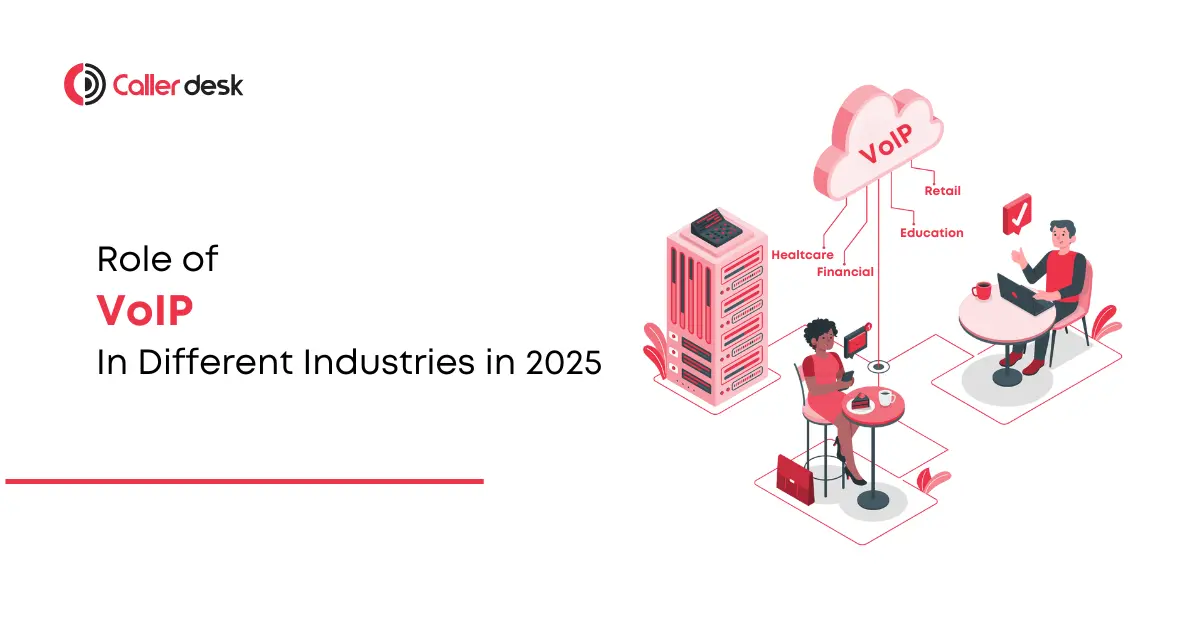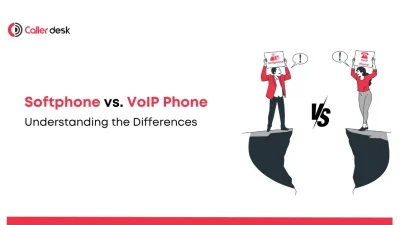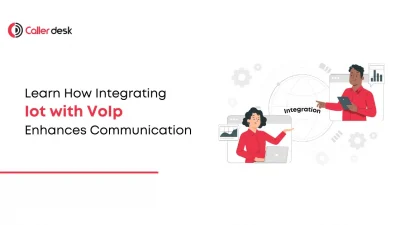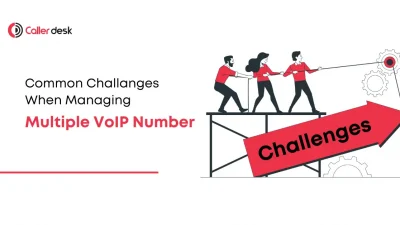The global workplace is undergoing a seismic shift. By 2025, remote work is projected to constitute 22% of the workforce, equating to approximately 32.6 million Americans working remotely. As businesses adapt to this reality, communication technology must evolve to meet the demands of a distributed workforce. Traditional phone systems, with their high costs and limited features, are becoming increasingly obsolete.
Failing to adopt modern communication solutions like VoIP (Voice over Internet Protocol) can result in inefficiencies, frustrated customers, and a loss of competitive edge.
This guide delves into the profound impact of VoIP on key industries, emphasizing its transformative power and how businesses can leverage it to thrive in a digital-first world.
1. Healthcare
In healthcare, effective communication is critical for saving lives. VoIP ensures real-time, secure communication, enabling better care delivery and operational efficiency.
Key Benefits:
- Telemedicine & Remote Consultations:
Hospitals reduced patient wait times by 15% using VoIP-powered telemedicine, allowing doctors to consult patients across remote areas. - EHR Integration:
VoIP integrates with Electronic Health Records (EHR), enabling seamless access to patient data, improving accuracy in diagnosis and treatment. - Scalable Solutions:
Clinics expanded telehealth services by 30% with VoIP, accommodating growing patient demands without major infrastructure changes.
Emerging AI Trend:
AI-powered voice assistants in healthcare can triage patient inquiries, schedule appointments, and even send medication reminders, improving patient outcomes and reducing administrative burdens.
Real-World Example:
Mayo Clinic leverages VoIP for remote patient monitoring, enhancing care delivery while cutting operational costs significantly.
2. Education
VoIP is revolutionizing education by facilitating virtual learning and enabling seamless communication between educators and students worldwide.
Key Benefits:
- Enhanced Accessibility:
Schools expanded online learning enrollment by 40%, connecting students and teachers through VoIP-enabled video conferencing. - Cost Savings:
Universities saved 25% on telecom expenses, redirecting those funds to enhance digital learning tools. - Global Collaboration:
Institutions host international seminars and group discussions without logistical challenges.
Emerging AI Trend:
VoIP integrated with AI offers real-time transcription of lectures, making education more accessible to students with disabilities or language barriers.
Real-World Example:
Harvard Extension School uses VoIP to deliver interactive, global courses, connecting faculty and students seamlessly.
3. Retail
Retailers need agile communication to manage inquiries, personalize interactions, and streamline operations. VoIP enables them to do all this while reducing costs.
Key Benefits:
- Omnichannel Support:
Customers seamlessly interact through voice, SMS, and chat, improving first-response resolution rates by 20%. - Personalized Experiences:
CRM-integrated VoIP systems allow agents to tailor interactions, boosting satisfaction scores by 10%. - Analytics for Improvement:
VoIP analytics track call performance, optimizing customer service processes.
Emerging AI Trend:
AI-powered VoIP automates routine inquiries during peak hours, such as tracking orders or processing returns, ensuring uninterrupted customer service.
Real-World Example:
A mid-sized retailer reported a 15% increase in customer retention after adopting VoIP systems for personalized service.
4. Finance
Financial institutions prioritize security and compliance, making VoIP a reliable solution for encrypted communication and seamless operations.
Key Benefits:
- Encrypted Communication:
VoIP ensures secure transactions, protecting sensitive data with end-to-end encryption. - Compliance Support:
Call recording features simplify audits and ensure adherence to regulatory standards. - Improved Client Support:
Banks reduced query resolution times by 15%, enhancing customer trust.
Emerging AI Trend:
AI-powered VoIP assists in verifying transactions and authenticating users, reducing fraud risks and improving security.
Real-World Example:
Goldman Sachs adopted VoIP to ensure secure, efficient client communication while meeting stringent compliance standards.
5. Logistics and Transportation
In logistics, where timing is everything, VoIP ensures real-time coordination, streamlining deliveries and enhancing productivity.
Key Benefits:
- Instant Communication:
Fleet managers and drivers coordinate in real-time, reducing delivery delays by 20%. - Automated Updates:
Customers receive shipment notifications instantly, boosting transparency and trust. - Scalability:
Firms scaled operations by 50% using VoIP, accommodating growth without increased costs.
Emerging AI Trend:
AI tools analyze traffic data and adjust routes automatically, ensuring on-time deliveries.
Human Element:
“VoIP keeps our logistics team connected and productive, no matter the challenges,” says a logistics manager at a leading courier company.
6. Hospitality
VoIP enables hospitality businesses to deliver exceptional service while managing costs effectively.
Key Benefits:
- Streamlined Reservations:
Handle multiple guest inquiries simultaneously, ensuring faster responses. - CRM Integration:
Staff access guest preferences instantly, tailoring services and increasing loyalty by 20%. - Cost Savings:
Hotels saved 35% on communication expenses by replacing traditional systems with VoIP.
Emerging AI Trend:
AI-enabled VoIP automates guest bookings and upsells services based on preferences, enhancing the overall experience.
Real-World Example:
Hilton Hotels improved guest satisfaction scores by integrating VoIP with their CRM systems.
7. IT and Tech: Enabling Global Collaboration
For IT and tech companies, VoIP provides the scalability and flexibility needed to support global teams and innovative projects.
Key Benefits:
- Global Connectivity:
Teams collaborate effectively using voice, video, and messaging, reducing delays by 10%. - Scalability:
Startups scaled their communication infrastructure by 50% without significant costs. - Improved Client Communication:
VoIP enhanced customer service response times, boosting satisfaction by 15%.
Emerging AI Trend:
AI-powered VoIP provides intelligent call routing, ensuring clients reach the right department without delays.
Real-World Example:
Google relies on VoIP for seamless communication across global teams, ensuring consistent project delivery.
Emerging Trends in VoIP (2025)
- AI-Powered Voice Assistants:
Automate call routing, appointment scheduling, and FAQs across industries for improved efficiency. - Unified Communications as a Service (UCaaS):
Combine voice, video, chat, and collaboration tools into a single platform to streamline workflows. - Data Security Compliance:
Meet strict data privacy regulations like GDPR with VoIP’s advanced encryption and secure integrations.
Why VoIP is Essential in 2025
VoIP isn’t just a tool; it’s a competitive necessity. By adopting VoIP, businesses can:
- Reduce Costs: Save up to 50% on telecom expenses.
- Boost Productivity: Improve workflows and reduce inefficiencies.
- Deliver Exceptional Service: Enable fast, personalized customer interactions.
- Ensure Security: Protect sensitive data with robust encryption.
Start your VoIP transformation today and stay ahead of the competition:
- Schedule a Free Consultation with Callerdesk experts to discover how we can help.
- Download Our Free Guide to learn more about the benefits of VoIP for your industry.
Exclusive Offer: Act now and receive a free trial of Callerdesk’s VoIP solutions, plus a complimentary consultation with our experts—limited time only!





